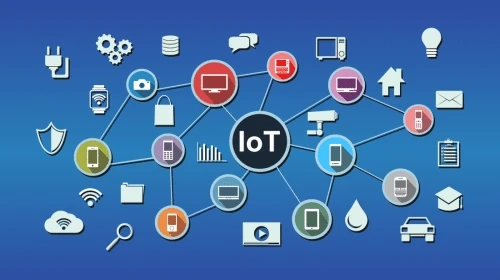Several corporate sectors, including agriculture, retail, and utilities, are embracing IoT solutions to increase worker productivity and safety. Similarly, the introduction of IoT in telecom firms will demonstrate its ability to improve business processes and earn more money. According to research, IoT can create $1.8 trillion in income for mobile network providers. Telecom firms must create novel ways and applications for monetizing IoT telecom services to capitalize on this new income potential.
The introduction of IoT Development Platform is expected to revolutionize telecom service providers\' roles in allowing connectivity between people and things. As a result, company leaders must develop new IoT-enabled services for their customers and apps to improve their business operations.
Despite the fact that mobile and network connection services are mostly commoditized, they are at the heart of telecoms carriers\' service offerings. Telecommunications services are nearly indistinguishable from those provided by competitors, with the primary difference being pricing.
The prospects that IoT provides for telecommunications
Telecoms may supplement their service offerings with various IoT-enabled services in sectors such as smart manufacturing, smart retail, smart city, smart home, car and asset tracking, and others.
To actualize these IoT capabilities, I suggest that telecom firms establish an IoT platform for their clients to link end-point devices, centralize control, and execute required IoT applications. The IoT Development Platform should be designed on an open, modular architecture with dependable APIs between components.
This description highlights a few important elements of IoT frameworks:
- Remote, Real-Time Data Collection: IoT networks rely on dependable data collection technologies, such as wireless sensors, which are incorporated in the activities of the items they monitor. This comprises information regarding operating conditions, environmental input, and anything relevant to the watched process. Sophisticated sensors can collect a large amount of data on the performance and state of a monitored object, delivering vital information second by second.
- Cloud Computing: Data is useless if it isn\'t the proper data and isn\'t presented in relevant ways to those gathering it. As a result, IoT development services significantly rely on dispersed cloud services to process data and provide analysis and insight.
- Integrated Platforms: Software, hardware, and communication technologies must all function in unison to ensure that real-time intelligence reaches its intended destination, whether that is a cloud server, a technician, or a decision-maker in the home office. This intelligence must be relevant and actionable for your organization\'s users. Keeping this in mind, internet of things companies feature specialized software that aggregates and visualizes incoming data to assist you in making better decisions.
Today\'s telecom operators confront declining margins and rising customer churn in their consumer-focused businesses, as well as increased competition from over-the-top communication service providers (CSPs). To maintain relevance in a rapidly changing economy, telcos must go beyond merely offering connection and security services.
In a nutshell
By incorporating successful IT growth domains into your IoT business, you will be able to remain ahead of the competition and create an entirely distinct solution stack. Among these domains are enterprise mobility, machine-to-machine interface and collaboration, infrastructure, security, and data analytics. Focus on prospective verticals, develop the correct go-to-market and service model for each sector, and construct attractive technological solutions to maximize the return on your IoT expenditures.



